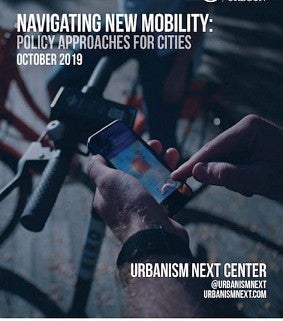
The report, developed by Urbanism Next Program Director Becky Steckler and Associate Professor Rebecca Lewis, makes specific recommendations for to help maximize opportunities presented by new mobility while getting ahead of challenges. Recommendations specifically address:
- Safety
- Social equity
- Active transportation
- Congestion and vehicle miles traveled
- Sustainability and environmental impacts
- Design and management of the right-of-way (ROW)
- Land use and metropolitan footprint
- Informed decision-making
- Managed innovation
- Fiscal impacts and new mobility revenue
The National Institute for Transportation and Communities (NITC) supported this research with additional funding from the Cities of Eugene and Gresham.
Several Sustainable City Year Program classes developed complementary reports on several of these topic areas including fiscal impacts, active transportation, land use, and design through last year’s joint SCYP-Urbanism Next partnership (read more about the partnership here). Those reports, as well as all past partner reports, are available through the University of Oregon’s Scholars Bank portal.
While the recommendations of Navigating New Mobility are specific to Eugene and Gresham, the report’s findings are applicable to cities throughout North America. This report furthers the state of research on new mobility to date while also considering many of the nuanced opportunities and challenges facing suburban and mid-sized cities.
